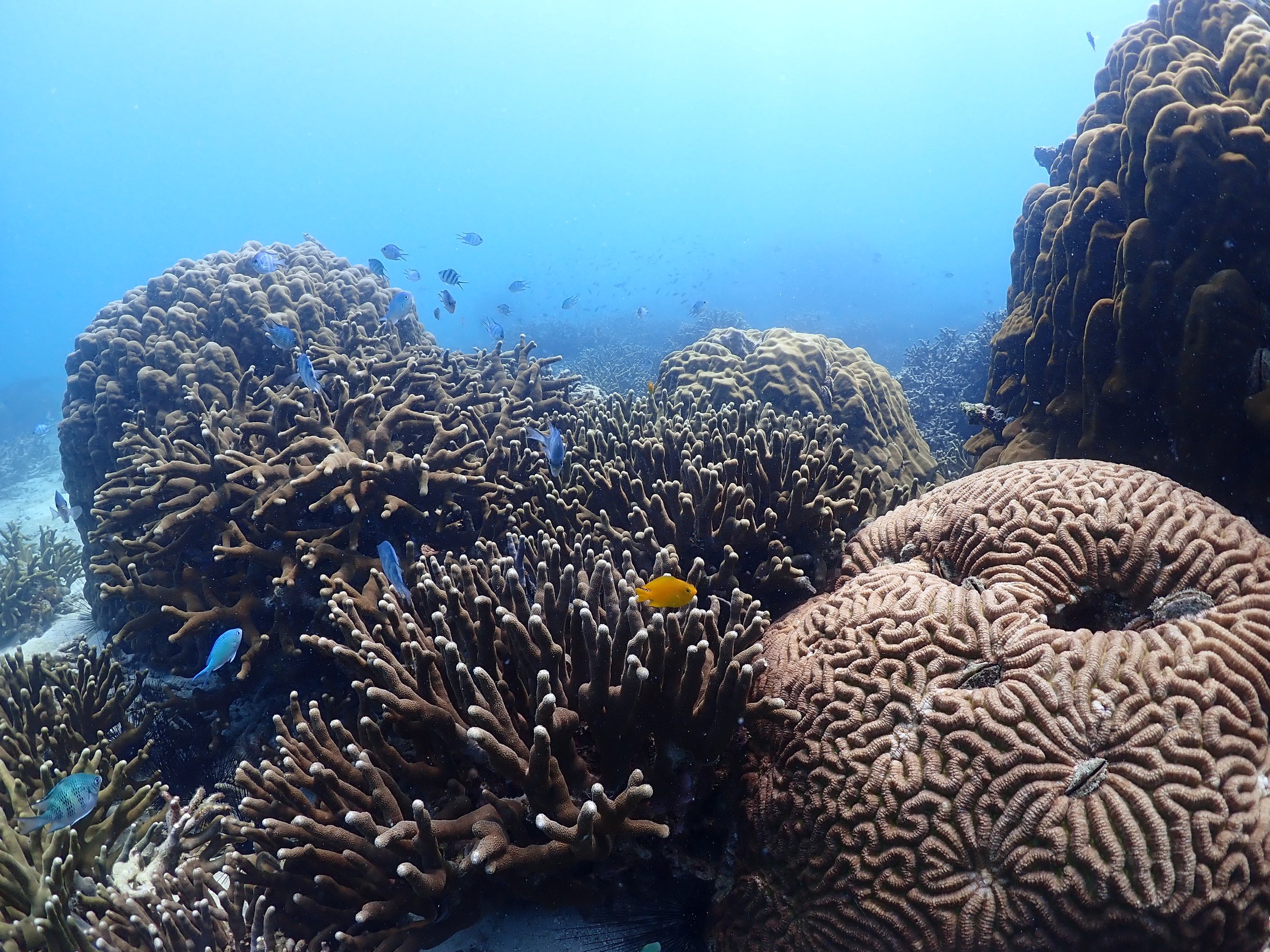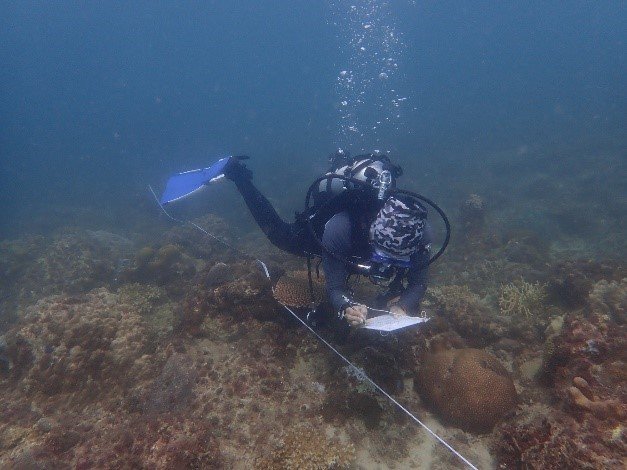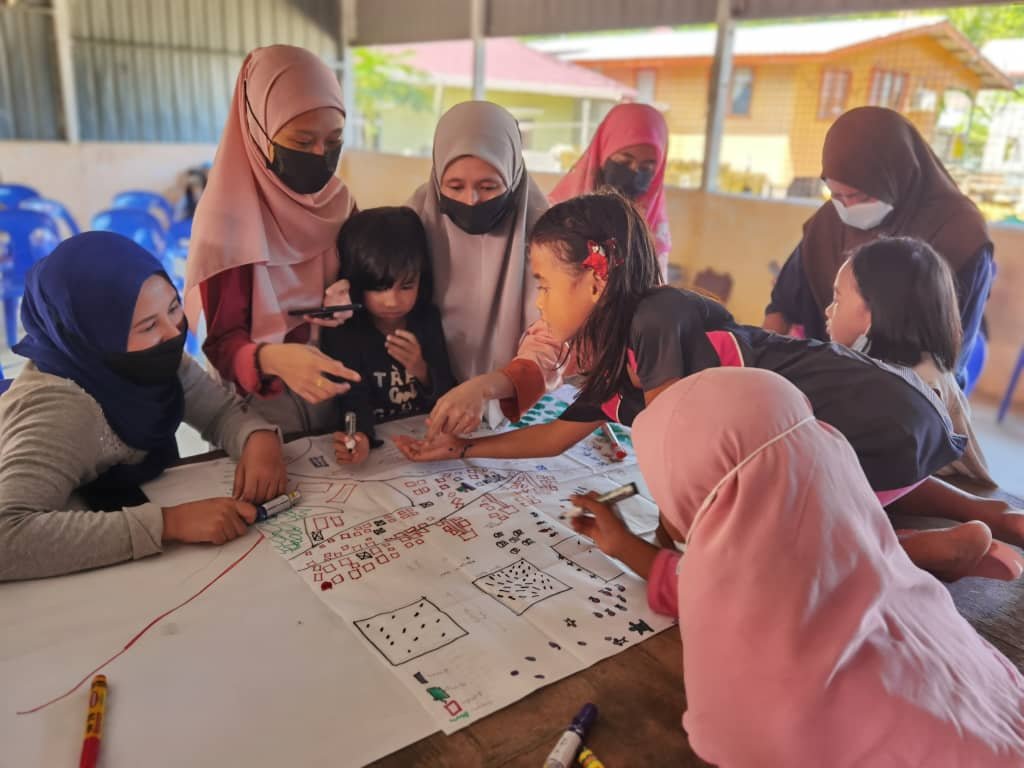On Saturday 11th June, I participated in a beach clean-up organised by one of our long-time sponsors, Sime Darby Foundation. They have been supporting our work on Tioman island for eight years and we are now working to get the island up to speed for accreditation to the IUCN Green List standard.
The event was arranged to coincide with World Environment Day on 5th June – but had to be delayed a week due to a local holiday. Thinking about it that morning, I realised that June 5th was just one “day” in that week. World Ocean Day is on June 8th, and Coral Triangle Day is on June 9th.
And I started to wonder, what have all these “days” achieved in raising awareness about the importance of, and threats to, our ecosystems? Judging by the amount of trash we picked up this morning, not much, is the depressing answer.
Photo credit: Yayasan Sime Darby
140 people joined the effort, and between them they collected 1,074 kg of trash in just one hour. The usual culprits – plastic bottles, diapers (yuck!), cans, food wrappers and so on. Surprisingly few straws, though. Maybe that campaign has had an impact!
But here’s the rub. I can almost guarantee that if I go out to the same location next week I will face the same rubbish-strewn beach and – particularly – mangrove forest.
Photo credit: Yayasan Sime Darby
Because a lot of what we found looked like it was deliberately thrown there. We were pulling out plastic bags full of what I will call “picnic trash” – food wrappers, plastic bottles, cutlery – all nicely packed in a bag…and then carelessly discarded on departure.
Does that sound judgemental? Does it sound like a huge assumption?
Come, visit, I’ll show you, and I am quite sure you will find yourself in agreement.
I acknowledge that some beach trash arrives from the ocean; I get it, and I have seen it in many places. But this was in a mangrove back from the main beach; near the parking lot, and on a road out. I’m sorry, but not all that stuff came from the sea, having been discarded elsewhere. Not to mention all the “picnic trash” that we DID pick up ON the beach.
About 4 years ago, we (Reef Check Malaysia) decided to get more involved in the issue of marine debris, particularly plastic. Because it was becoming such a big problem that beach clean-ups alone weren’t going to solve it. So we started to work with various stakeholders to look at plans to remove single use plastics, move to a circular economy, raise awareness, etc., and maybe, one day, see an end to the need for beach clean-ups.
At the time, our (unofficial) slogan was “no more beach clean-ups in 10 years” – because, to quote a line often attributed to Einstein but which one source attributes to writer Rita Mae Brown, “insanity is doing the same thing over and over again, but expecting different results”. And that is what we were doing – lots of beach clean-ups…but nothing seemed to change.
This all became horribly apparent that morning on seeing the mess on the beach but – more particularly – in the mangrove. It was awful, truly awful.
Photo credit: Yayasan Sime Darby
Many of the volunteers were on their first clean-up, and were surprised at the amount of trash in there. And when I talked to them about how mangroves are actually an important source of food and other ecosystem services - you could almost see light bulbs going on. While pulling trash out they were unearthing crabs (squeals!!) and asking “are these edible?”
Connections being made.
They got it.
So why are some of us such inveterate litterers that we just discard all this trash with no thought for the impact it will have – not just on the aesthetics of the place, but on the survival of the ecosystems? And ultimately, us?
I found several mangrove roots that were being strangled inside plastic bags that prevented them from growing properly. And I have seen the same on coral reefs where plastic bags cover corals - blocking off sunlight and killing them.
Photo credit: Yayasan Sime Darby
What do we need to say to get people to change this awful habit? Because like I said, I’m not sure that the message is getting through. I’m not sure we have made any progress – half way into our 10-year timescale. I’m all for raising awareness, which is what all these “days” are for; but it isn’t working and we need to fix it – see quotation above!
One of the participants has just returned from a safari holiday in Tanzania. He was relating to me how, on arrival, you are told “leave all the plastic behind in the airport because it isn’t allowed where you are going”. Strict regulations, emphatically enforced.
Another participant was telling me about a tourist spot outside Kuala Lumpur that is managed by one old man who insists that visitors take their trash with them. Because he cares enough to enforce some common sense guidelines.
We need to find a way to better enforce regulations – it won’t come as a surprise that there were signs all over the beach announcing the fines for littering. Yeah, that’s working.
And we need to find a way to get more people to care.
Photo credit: Yayasan Sime Darby
As David Attenborough said, “No one will protect what they don’t care about; and no one will care about what they have never experienced”.
So let’s keep those “days” coming – but work hard to get more and more people involved, so they can experience nature for themselves, and start to develop a sense of ownership.
Companies, schools, social groups – when you ask “what can we do to help?” the answer is – go organise a clean-up. Bring some people and let them see for themselves how we are trashing the ONE PLACE WE HAVE TO LIVE. Get that awareness raised, and keep doing it until it changes.
Government. Sorry, but things need to improve. Yes, people are littering on beaches. But is it not also true that household segregation and recycling rates are woeful? How many households even bother? And why not? Recycling infrastructure can still be improved, education can still be improved…and how about some enforcement of Act 672?
Photo credit: Yayasan Sime Darby
Shameless plug for our own event – sign up for International Coastal Clean-up Day with us – it’s happening in September - usually the third weekend but that coincides with Malaysia Day so we are having it the weekend before this year.
If you are keen to join, fill in the form here. Contact us for more details here.





































































































